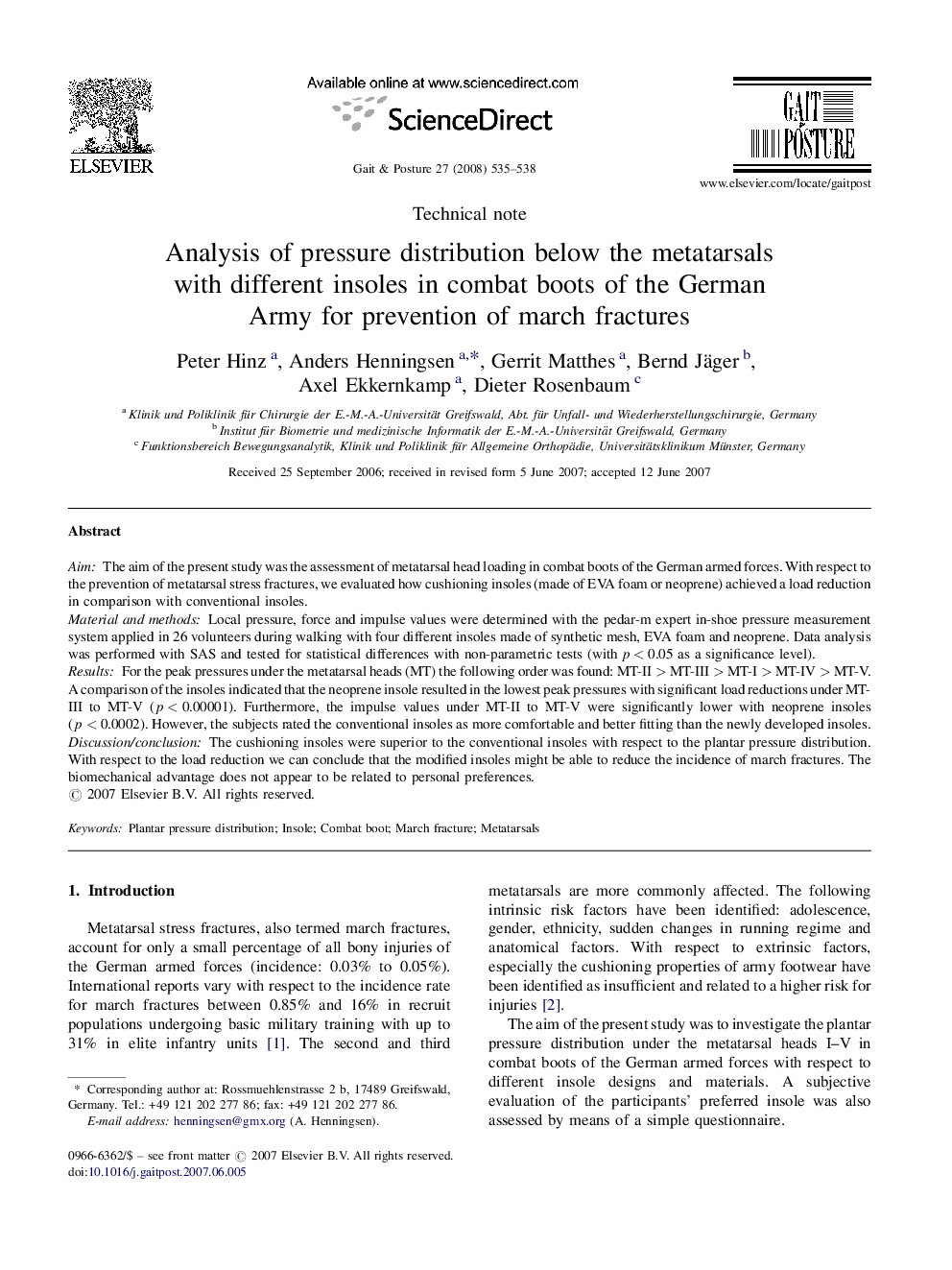| Article ID | Journal | Published Year | Pages | File Type |
|---|---|---|---|---|
| 4058205 | Gait & Posture | 2008 | 4 Pages |
AimThe aim of the present study was the assessment of metatarsal head loading in combat boots of the German armed forces. With respect to the prevention of metatarsal stress fractures, we evaluated how cushioning insoles (made of EVA foam or neoprene) achieved a load reduction in comparison with conventional insoles.Material and methodsLocal pressure, force and impulse values were determined with the pedar-m expert in-shoe pressure measurement system applied in 26 volunteers during walking with four different insoles made of synthetic mesh, EVA foam and neoprene. Data analysis was performed with SAS and tested for statistical differences with non-parametric tests (with p < 0.05 as a significance level).ResultsFor the peak pressures under the metatarsal heads (MT) the following order was found: MT-II > MT-III > MT-I > MT-IV > MT-V. A comparison of the insoles indicated that the neoprene insole resulted in the lowest peak pressures with significant load reductions under MT-III to MT-V (p < 0.00001). Furthermore, the impulse values under MT-II to MT-V were significantly lower with neoprene insoles (p < 0.0002). However, the subjects rated the conventional insoles as more comfortable and better fitting than the newly developed insoles.Discussion/conclusionThe cushioning insoles were superior to the conventional insoles with respect to the plantar pressure distribution. With respect to the load reduction we can conclude that the modified insoles might be able to reduce the incidence of march fractures. The biomechanical advantage does not appear to be related to personal preferences.
